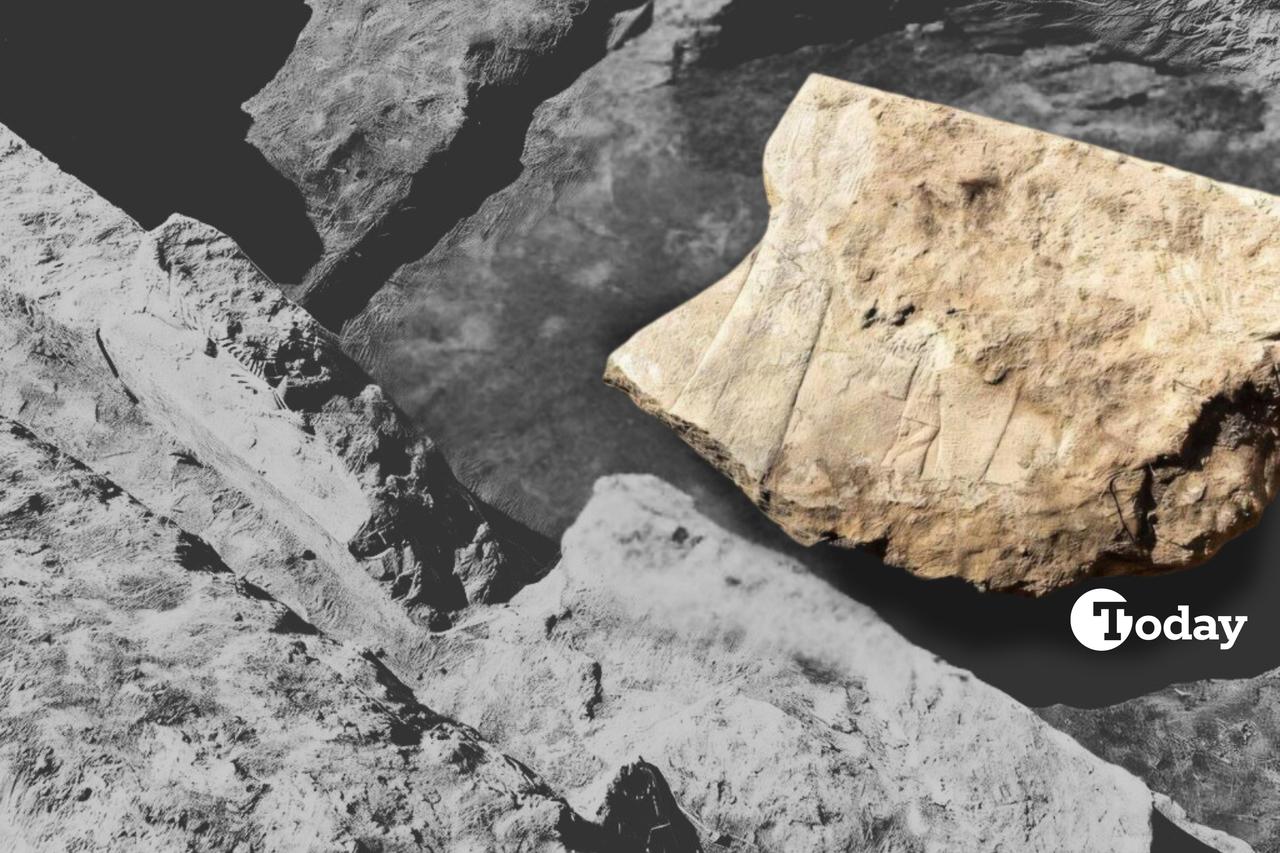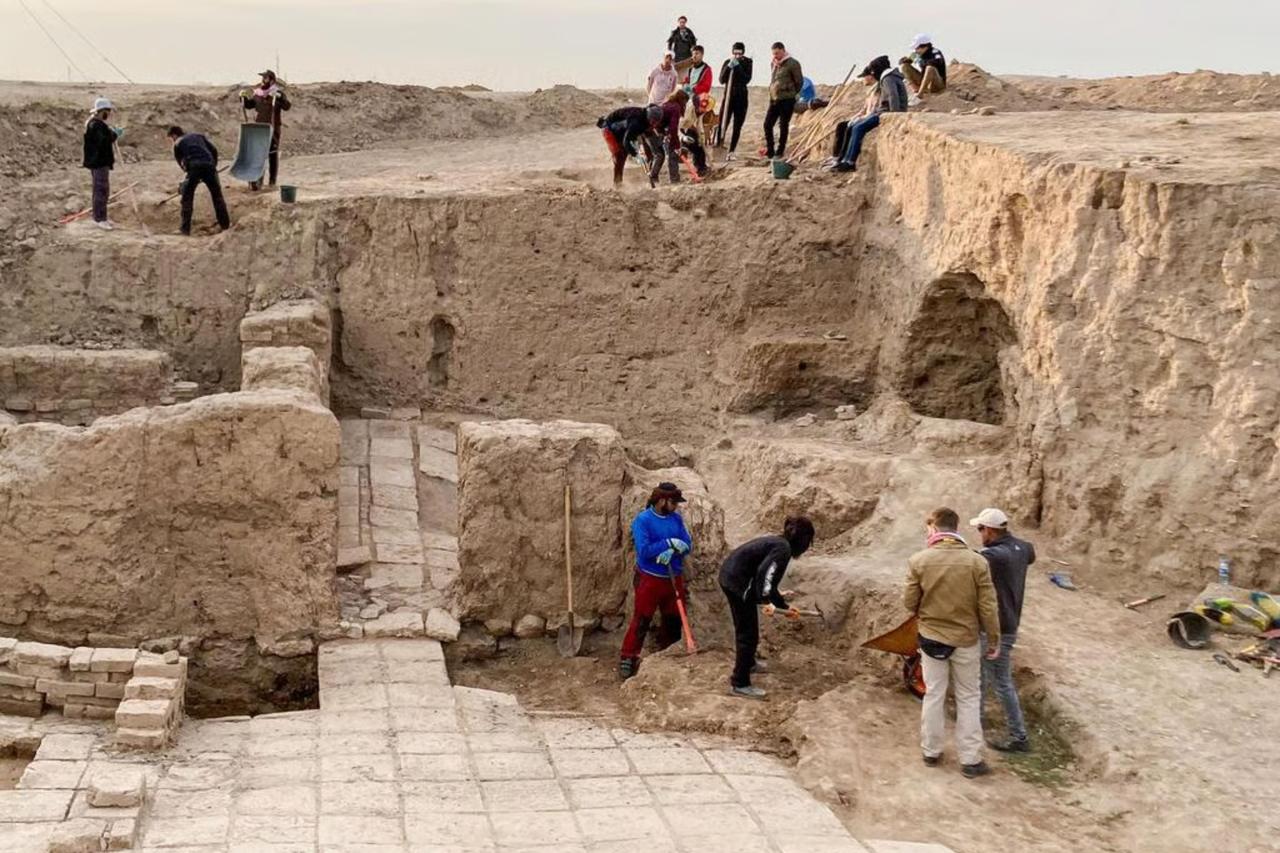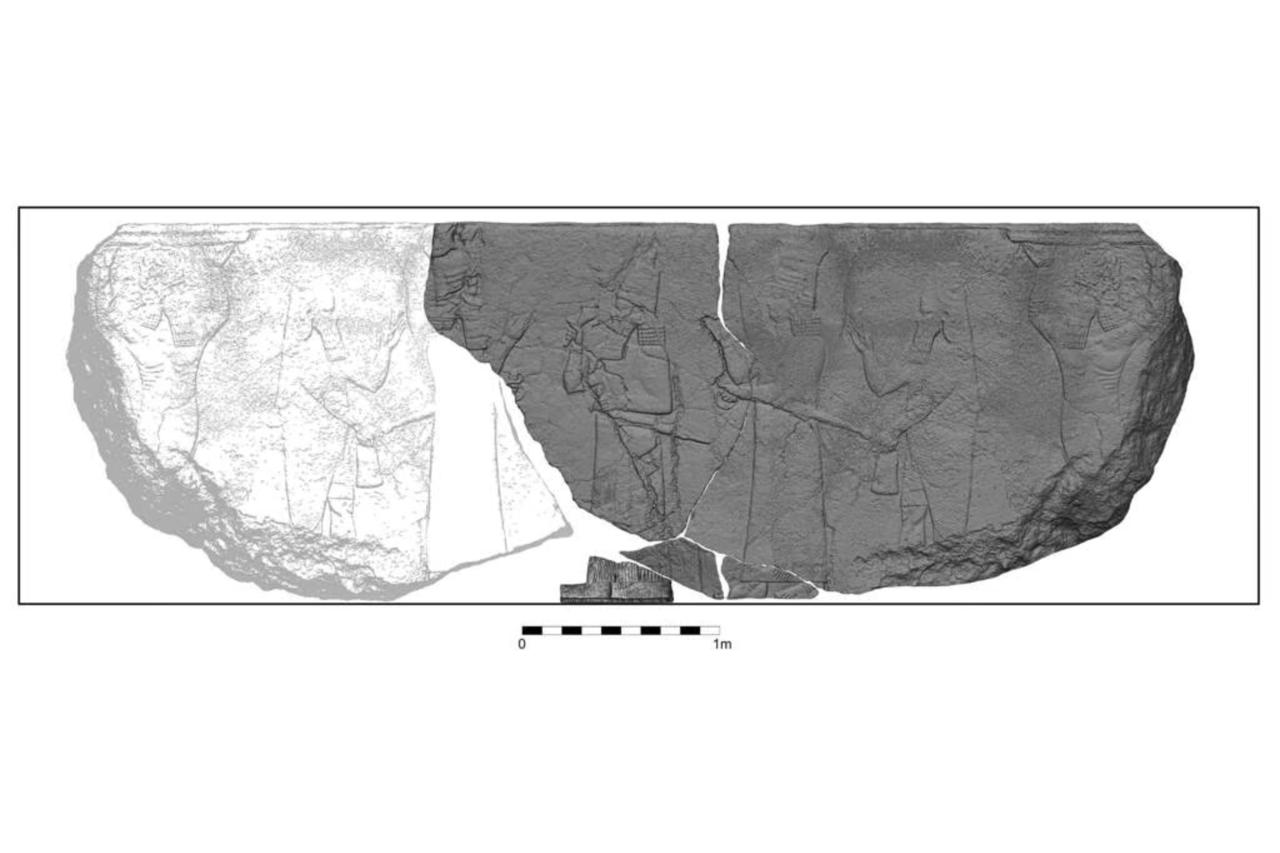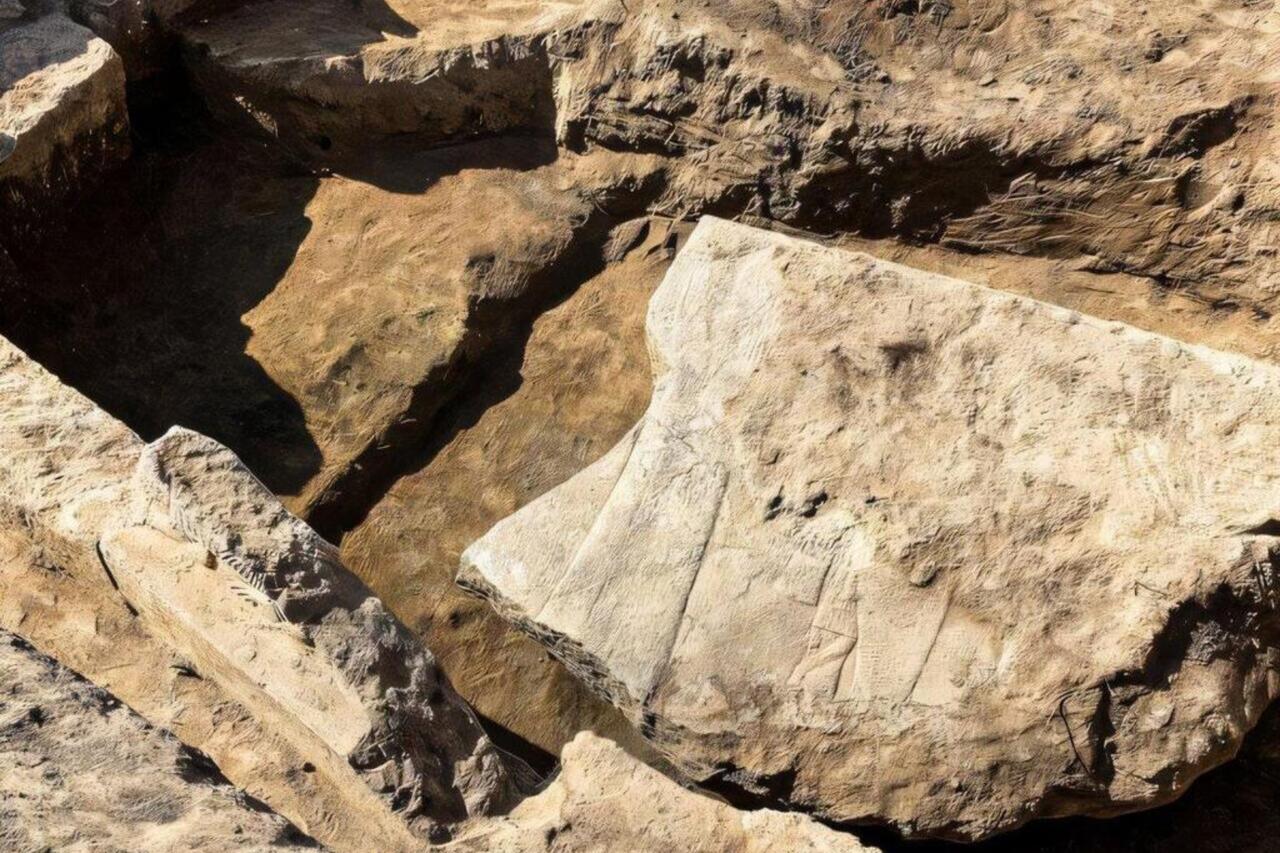
In a discovery shaking the foundations of Assyriology, archaeologists from Heidelberg University have unearthed a monumental bas-relief from the seventh century B.C. in the ancient city of Nineveh, located in the modern-day city of Mosul in northern Iraq. The relief, found buried in a niche of King Ashurbanipal’s throne room in the North Palace, depicts the Assyrian monarch flanked by major gods—an unprecedented occurrence in palace art.
Speaking exclusively to Türkiye Today, Professor Aaron Werner Schmitt, director of the Heidelberg Nineveh Project, detailed the moment of revelation: “We found the first of the two large fragments during our 2023 season. The size and iconography of the stone slab really surprised us,” said Schmitt. “We would never have expected to find such an artifact in this spot, for two reasons: firstly, it had already been excavated by British archaeologists in the 19th century, and they had not documented any finds from there. Secondly, the relief shows figures we did not expect to find in an Assyrian palace—namely depictions of the great gods of the Assyrian pantheon.”

What sets the relief apart is the prominent depiction of Ashur—the chief deity of the Assyrian Empire—and the goddess Ishtar, patroness of Nineveh. Their presence alongside the king within the throne room suggests complex theological and political symbolism.
“Ashur does not have his own iconography,” Schmitt explained. “We identify him through context. From cuneiform texts, we know Ashur was essential for Assyrian kingship—the empire and its ruler depended on him. We believe the male figure before the king must be Ashur.”
“Ishtar, on the other hand, has a clearly defined martial iconography,” he added. “She is depicted with bows and quivers protruding from her shoulders, symbolising her roles in war and sexuality. She was the main deity of Nineveh and had an important temple there.”
The appearance of these deities—previously undocumented in royal reliefs—could indicate a unique visual strategy employed by Ashurbanipal to reinforce divine legitimacy and sacred kingship.
The relief had been buried in a pit behind the throne room’s niche during the Hellenistic period, a move that helped preserve the artwork for over two millennia. While the reasons for this act remain unclear, initial analysis of the fill material—unusual ceramics and heavily burnt bones—suggests a ritual or ceremonial context.
“We are not yet able to come up with any good hypotheses,” Schmitt admitted. “The bones are heavily burnt—this is not a usual pit filling. We’ll discuss this further with our archaeozoologist, Canan Cakirlar from Groningen, once her analysis is complete.”

Although physical reinstallation of the relief in its original palace niche is being considered in collaboration with the Iraqi State Board of Antiquities and Heritage, digital reconstructions have already been completed.
“We are thinking about good ways to present this to the public, but we do not have concrete plans yet,” Schmitt said.
Meanwhile, the Heidelberg team will resume excavations in summer and again in spring 2026, focusing on the throne room and adjacent spaces within the North Palace.
“Hopefully we will learn more about why the relief was buried there,” Schmitt noted. “We also have a second excavation area elsewhere in the palace, which had never been explored before. We made some exciting discoveries there last season, and I hope to report on them next year.”

The discovery, part of the Heidelberg Nineveh Project since 2018, provides vital insights into the intersection of art, kingship, and religion in ancient Mesopotamia. By combining archaeological, textual, and digital methodologies, the project seeks to reconstruct the cultural landscape of the Assyrian Empire at its zenith.
“This discovery provides new insights into the art and religious practices of the Assyrian Empire during one of its most significant periods,” said Schmitt. “It reminds us how much there still is to learn from ancient sites, even ones that have been excavated for over a century.”